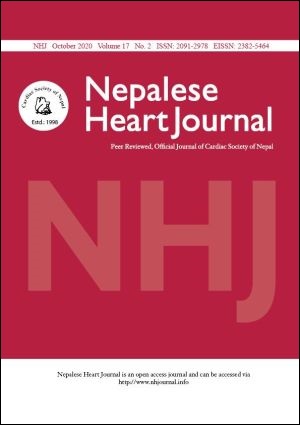In Hospital Outcomes after Bidirectional Cavopulmonary Anastomosis: 18 Year Experience from a Single Center
DOI:
https://doi.org/10.3126/njh.v17i2.32673Keywords:
Bidirectional cavopulmonary shunt, staged palliation, univentricular heartAbstract
Background: Bidirectional cavopulmonary shunt (BCPS) is used for the interim palliation of a variety of cyanotic cardiac lesions. It is a standard palliative step for patients with functionally univentricular hearts in hope of achieving Fontan completion. At our center, first case of BCPS was performed on February 7, 2002. Here, we share our experience with BCPS over last 18 years.
Methods: This is a retrospective analysis of all patients undergoing BCPS from February 2002 to July 2019. Patients who underwent BCPS as a part of one-and-half ventricular repair for Ebstein’s anomaly were excluded. Baseline, intraoperative, and postoperative variables were collected from hospital records.
Results: A total of 326 patients with mean age of 5.7±5.8 years (median 3.5 years; range: 1.5 months-32 years) underwent BCPS over last 18 years. Majority (61%) were males. Double outlet right ventricle (DORV) was the most common primary cardiac lesion (30%) followed by tricuspid atresia (23%). Mean ICU stay was 3.9±4.8 days, with hospital stay of 7.8±5.9 days. In-hospital mortality was 15%. Patients who died had low body weight (11.8±10.7 kg vs 16.0±11.6 kg; p=0.019), and longer cardiopulmonary bypass time (101±64 min vs 76±42 min; p=0.001). Oxygen saturation improved significantly at the time of discharge (79.2±9.5% vs 68.6±13.7%; p=0.000).
Conclusion: This is the first report of its kind to analyze the outcomes of BCPS in our center. We have discussed the evolution of BCPS surgery in our center and presented our outcomes. Our in-hospital mortality remains high, and we need to strive towards reducing the mortality.
Downloads
Downloads
Published
How to Cite
Issue
Section
License
This license enables reusers to distribute, remix, adapt, and build upon the material in any medium or format, so long as attribution is given to the creator. The license allows for commercial use.




